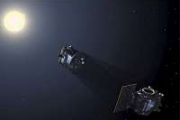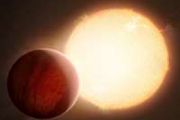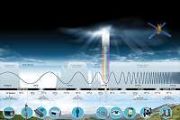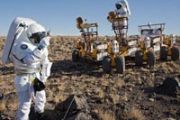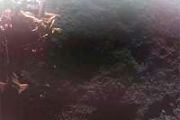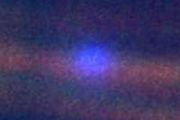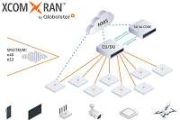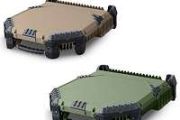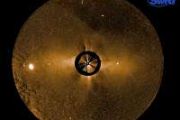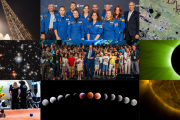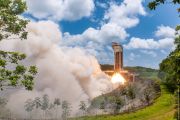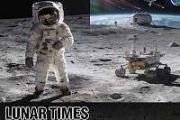
Copernical Team
Sols 4488-4490: Progress Through the Ankle-Breaking Terrain
 Earth planning date: Friday, March 21, 2025: It's the start of spring here in the Northern Hemisphere on Earth, but in Gale Crater on Mars our rover is still heading into the depths of Martian winter. We're just a few weeks away from Mars' aphelion - the time when it's farthest from the Sun. The Mars-Sun distance varies more significantly than the Earth-Sun distance because of the greater eccent
Earth planning date: Friday, March 21, 2025: It's the start of spring here in the Northern Hemisphere on Earth, but in Gale Crater on Mars our rover is still heading into the depths of Martian winter. We're just a few weeks away from Mars' aphelion - the time when it's farthest from the Sun. The Mars-Sun distance varies more significantly than the Earth-Sun distance because of the greater eccent NASA's rover Curiosity finds biggest known organic molecules on Mars
 The NASA rover "Curiosity" discovered what scientists say is the largest ever seen organic molecules on Mars, raising speculation about if life was created billions of years ago on the Red Planet.
"Our study proves that, even today, by analyzing Mars samples we could detect chemical signatures of past life, if it ever existed on Mars," stated Caroline Freissinet, the study's lead author
The NASA rover "Curiosity" discovered what scientists say is the largest ever seen organic molecules on Mars, raising speculation about if life was created billions of years ago on the Red Planet.
"Our study proves that, even today, by analyzing Mars samples we could detect chemical signatures of past life, if it ever existed on Mars," stated Caroline Freissinet, the study's lead author JAXA adopts Spirent lunar navigation simulation to advance Moon missions
 Spirent Communications plc (LSE:SPT), a leader in test and assurance solutions for emerging network technologies, has been chosen by the Japan Aerospace Exploration Agency (JAXA) to deliver an advanced lunar positioning, navigation, and timing (PNT) simulation system. This groundbreaking tool is designed to underpin JAXA's ongoing lunar exploration efforts and support the creation of essential n
Spirent Communications plc (LSE:SPT), a leader in test and assurance solutions for emerging network technologies, has been chosen by the Japan Aerospace Exploration Agency (JAXA) to deliver an advanced lunar positioning, navigation, and timing (PNT) simulation system. This groundbreaking tool is designed to underpin JAXA's ongoing lunar exploration efforts and support the creation of essential n Hera asteroid mission tested self-driving technique at Mars
As ESA’s Hera planetary defence mission flew past planet Mars it autonomously locked onto dozens of impact craters and other prominent surface features to track them over time, in a full-scale test of the self-driving technology that the spacecraft will employ to navigate around its target asteroids.
Image: Atomic Clock Ensemble in Space: Time to get ready
This request seems a bit unusual, so we need to confirm that you're human. Please press and hold the button until it turns completely green. Thank you for your cooperation!
Press and hold the button
If you believe this is an error, please contact our support team.
185.132.36.159 : 6c39498d-a9e3-43e3-b2f6-08dca6a2
Building a solar power satellite from moon dust
This request seems a bit unusual, so we need to confirm that you're human. Please press and hold the button until it turns completely green. Thank you for your cooperation!
Press and hold the button
If you believe this is an error, please contact our support team.
185.132.36.159 : 2776a96a-ae6f-4ee3-99f9-a3fd8b58
Nighthawk: A proposed Mars chopper mission over glaciers and canyons
This request seems a bit unusual, so we need to confirm that you're human. Please press and hold the button until it turns completely green. Thank you for your cooperation!
Press and hold the button
If you believe this is an error, please contact our support team.
185.132.36.159 : b36e3280-968d-4d3f-9257-070967fc
Stuck astronauts Suni Williams and Butch Wilmore are finally on their way back to Earth
This request seems a bit unusual, so we need to confirm that you're human. Please press and hold the button until it turns completely green. Thank you for your cooperation!
Press and hold the button
If you believe this is an error, please contact our support team.
185.132.36.159 : 7d23449b-be81-48fe-a4cb-1df050d8
A new company plans to prospect the moon
This request seems a bit unusual, so we need to confirm that you're human. Please press and hold the button until it turns completely green. Thank you for your cooperation!
Press and hold the button
If you believe this is an error, please contact our support team.
185.132.36.159 : f91dbce1-2526-46f7-aadb-35eca347
Homebound: 'Stranded' ISS astronauts now hours from splashdown
This request seems a bit unusual, so we need to confirm that you're human. Please press and hold the button until it turns completely green. Thank you for your cooperation!
Press and hold the button
If you believe this is an error, please contact our support team.
185.132.36.159 : c91f2989-799c-4b2b-b69a-8ff16be9








